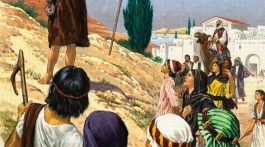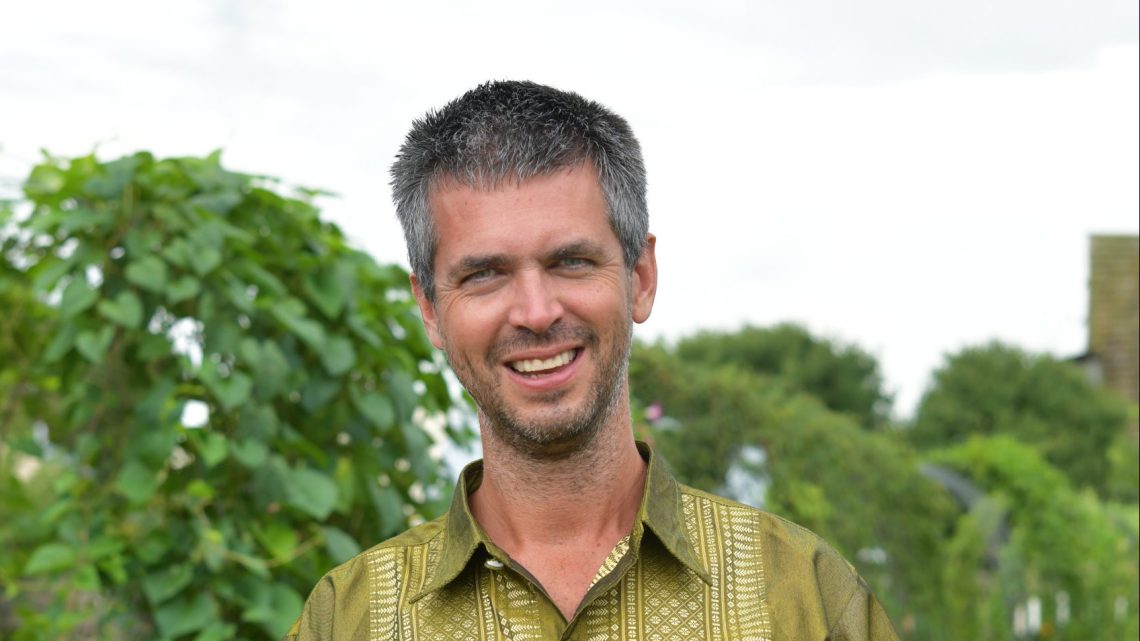There are two major areas where I believe the windows are currently wide open in the world for more robust conversations and information sharing: human health and care of the environment.
When I learned about Baker Creek Seeds a few years ago and how they are so skillfully and graciously combining these two areas, I was fascinated and began the process of requesting and scheduling an interview with the founder/owner, Jeremiath Gettle.
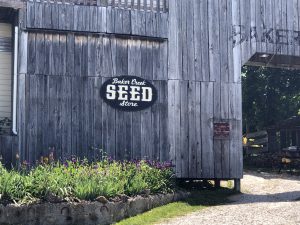 While I waited, I learned all I could from their website: rareseeds.com. Located in the rolling Ozarks near Mansfield,Missouri, the Baker Creek village includes trial gardens, greenhouses, an old-time mercantile, herbal apothecary, natural bakery, vegan restaurant and many breeds of historic poultry and livestock—all on the homestead where Jere started the business as a teenager. There are also two barns used for old-time music and modern presentations during their summer heritage festivals, started in 2000 as a way to bring gardeners, homesteaders and natural foods enthusiasts together to exchange ideas and seeds and learn from renowned experts.
While I waited, I learned all I could from their website: rareseeds.com. Located in the rolling Ozarks near Mansfield,Missouri, the Baker Creek village includes trial gardens, greenhouses, an old-time mercantile, herbal apothecary, natural bakery, vegan restaurant and many breeds of historic poultry and livestock—all on the homestead where Jere started the business as a teenager. There are also two barns used for old-time music and modern presentations during their summer heritage festivals, started in 2000 as a way to bring gardeners, homesteaders and natural foods enthusiasts together to exchange ideas and seeds and learn from renowned experts.
The mission of Baker Creek is to “provide the seeds of a sustainable food supply for everyone and keep heirloom varieties alive for future generations.” Since they sell only heirloom varieties, all their seeds can be saved, shared and traded.
Charitable giving is a foundation of Baker Creek’s business. Working with non-profit organizations, a significant portion of their annual profits goes toward providing food, emergency aid, sustainable development and education to people in the U.S. and abroad. They also provide free seeds to hundreds of community and educational groups each year, because they believe that “everyone should have access to nutrient-dense, delicious food, season after season.”
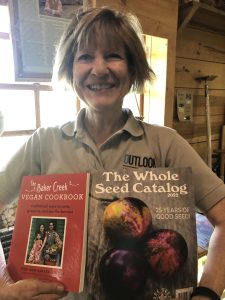 Jere and his wife Emilee are also the authors of two books published by Hyperion: The Heirloom Life Gardener and The Baker Creek Vegan Cookbook. Emily and Jere were both homeschooled and they are homeschooling their four children.
Jere and his wife Emilee are also the authors of two books published by Hyperion: The Heirloom Life Gardener and The Baker Creek Vegan Cookbook. Emily and Jere were both homeschooled and they are homeschooling their four children.
Finally, the day arrived for which I had been eagerly waiting. I was actually sitting with Jere in the gardens at Baker Creek and asking him questions. He spoke easily and the hour flew by.
Jere, what is your earliest memory of loving the earth?
I grew up gardening. My grandmothers and my parents all gardened. My Mexican grandmother who lived right next to us was always in her garden. My aunts and uncles gardened, the neighbors gardened—pretty much everyone I knew gardened and I grew up in the garden. When I was two-and-a-half, I started growing things. My earliest memories are in the garden planting things and watching them grow. I just took a natural interest from a very young age.
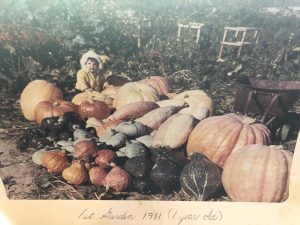 How does feeling connected to the land, and all living things, fuel your passion for your heirloom seed business?
How does feeling connected to the land, and all living things, fuel your passion for your heirloom seed business?
When I was very young my family always got seed catalogs in the mail and in the wintertime I would look at them and think that I wanted to work in the seed industry, with growing things. When I got older I started joining seed organizations like Seed Savers Exchange and then the internet became available to most people when I was in my teens. That opened up a lot of other possibilities and opportunities for research. I wanted to put out a seed catalog and when I was 17 I started sending out a catalog that I created in my bedroom. Little by little, the business has taken off and now it’s the largest heirloom seed company in the United States.
How does Baker Creek Seeds promote caring for the earth?
We focus on developing natural resources and caring for the environment by encouraging people to grow their own food or eat locally grown things to cut down on shipping. We also are trying to promote growing big, beautiful, diverse gardens and lawns that will attract all types of pollinators. In a few weeks these gardens where we are sitting will be filled with butterflies—monarchs, swallowtails and various others. The more diverse our landscapes, the better our natural environments will be. It will be a place to relax, and offer food sources to birds and other wildlife.
We also donate a lot of different seeds to school gardening projects here in the U.S. and to prison gardens and community gardens and orphanage garden projects.
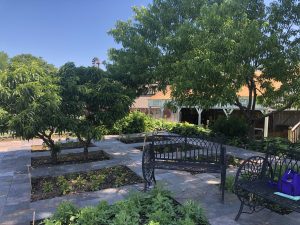 What are some of the guiding principles for choosing your humanitarian projects?
What are some of the guiding principles for choosing your humanitarian projects?
Find something that is a current need, find out who is actually on the ground there, and find someone who gives the bulk of the funding to the project and not “administration.” Of course, we look for organizations that hold shared values with Baker Creek Seeds. But the biggest thing is that the money is going to the people who need it right now, not a couple of years later—on the ground and ready to go. We also check Charity Navigator and Charity Watch to make sure the organizations are rated high and the financials are transparent. Whether it’s in Ukraine or Ethiopia or Afghanistan—whatever we can do. I appreciate everything ADRA is doing, especially keeping things running smoothly during the pandemic.
What link do you see between human health and heirloom seeds?
A lot of people aren’t connected with what they are eating. A lot of the food we eat is so processed. It’s not healthy and nutritious. It’s not as good as the produce at farmer’s markets. Sweet corn from the grocery store is old and wrinkled. It’s just not the same as if you grow it yourself or buy local. Things that are shipped in from Mexico or wherever don’t have the same quality. It’s also good to keep the money in the local community rather than multinational corporations.
There are so many potential links between healthcare and earth care. When you are gardening, you are out in nature with fresh air, and eating more fresh fruits and veggies. Many people are behind on drinking water, exercising, getting outside in the fresh air—with gardening you can have all of that. And you get to care for the environment in a-good-for-yourself, good-for-your-neighbor way without spraying chemicals. You are more in control of your food; you can know what’s in it and on it. It’s good for all the people in your space, as well as the animals.
Healthy eating and staying active also promotes longevity. As people age, gardening gives a purpose to get up in the morning and take care of something. It keeps you active and connected to your food supply and nature in general. And it cuts down on pollution being produced to bring the food to you, so leaves a smaller carbon footprint.
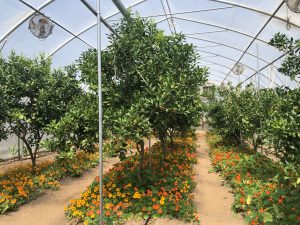 What are some specific ways people can increase their appreciation for God’s creations and gifts to humankind?
What are some specific ways people can increase their appreciation for God’s creations and gifts to humankind?
If you aren’t sure how to start gardening, find an established gardener and offer to help them so you can learn. It’s a great way to share produce, too. Then there are school gardens and gardens for the homeless. Most kids like to run around in a garden and see what is happening. There are no end of projects that need help, nationally or locally.
If you live in the city, you can garden on a micro scale on your balcony, or in your kitchen window. And there are still lots of different ways to volunteer. There are community gardens and botanical gardens. Other outdoor projects include volunteering to care for your city’s landscaping, or helping to clean up a stream.
How did the pandemic impact Baker Creek Seeds?
The last two years have seen a resurgence in gardening like not seen since the Great Depression. During the pandemic a lot of people got into gardening and houseplants and pets and remodeling projects. They put in new gardens, flower beds and trees. Enhancing the immediate environment seemed to be priority, taking care of their own homes and gardens and foods. People wanted to stay in their own yards and not catch something. When people were without jobs, and now with price increases and inflation on everything, food prices are going up—and people are more eager to garden.
Once they get into it, people are super passionate about heirloom seeds—always waiting to get the next new thing, whether it’s a nasturtium or petunia or tomato. Everybody’s thrilled to try something new—doesn’t matter what it is. We’ve had a lot more flower gardening going on during the past few years. We can hardly keep enough seeds in supply.
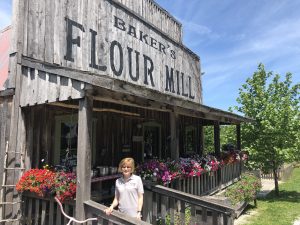 Your assistant told me you have two million people on your newsletter list now. What about your catalog?
Your assistant told me you have two million people on your newsletter list now. What about your catalog?
We printed 1.5 million seed catalogs for 2022 and we’re out of stock now. The price of paper has more than doubled and forced us to cut the size of the free catalog from 150 to 84 pages. But the purchased catalog is staying the same. It has over a thousand unique offerings.
What are some of the most important things you have learned during the past 25 years?
We need to be planting a wide diversity. Mixing it up keeps a crop from being destroyed by a particular insect or other enemy. The value of diversity also applies to hiring employees. It’s important for keeping a strong workforce and community. Different people bring different skills and ideas and strengths and recipes.
It’s the same with the festivals. They bring together people from all over the country to share ideas and thoughts and gardening methods and pieces of their stories and family traditions and connect people with other cultures that have different methods and recipes. In America it all gets fused together to create new local traditions that become part of a local community.
What about your cookbook and on-site restaurant?
Our cookbook is 10 years old now, but updating it isn’t a priority right now because we’re remodeling the restaurant so it can reopen. The cuisine will feature local vegetables, some Asian foods, and mushrooms from local growers. It’s open Monday through Friday, the same as the seed store. The restaurant remodel has been in progress for about six months.
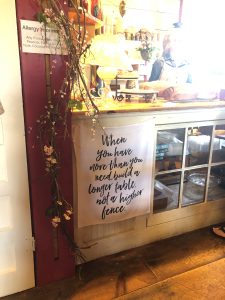 How else has the business been expanding?
How else has the business been expanding?
During the past two years Baker Creek Seeds has built a new warehouse just down the road in Seymour. We’ve been operating partly here and partly there as far as shipping and packing goes, but now it is almost all there. Just specialty things here. Now 99 percent of the shipping is being done from Seymour. There aren’t as many employees on the farm now. The warehouse is 30 minutes from Springfield and near the highway, so it is easier to get employees. There’s 105,000 square feet—room to spread out and not be cramped. We have no major building projects anticipated for 5-10 years, so that will allow us to donate more funding to projects like ADRA.
My personal goal for the business is to live on as little as I can. We’re not looking to buy a house in Hawaii or anything like that. My goal is to fund more projects through ADRA or ASAP ministries in southeast Asia, supporting missionaries and teachers and wells for local villages there. When we do fundraisers we tell our customers that all sales for a day or a certain period of time will go to this particular organization to help with this project. We did a project with the Salvation Army in Omaha a few years ago when they had all the flooding.
Whatever we don’t need for business growth or making sure our own employees are doing well, we want to donate. But our employees come first. There’s no point in helping other organizations if our own people aren’t doing well. We have about 110 right now.
There’s not much point in holding money in the bank either. It isn’t worth the interest right now.
Do you grow everything organically?
We try to go as organic as possible. But we never seem to get the peaches under control. Asian pears do well here. That’s our big storage crop. The apples and pears froze in a late frost the past two years in a row. Even our Japanese maples had to get cut back a lot. We don’t get as much snow as we used to on average, according to the old timers. And slightly warmer summers. We don’t have coastal influences in the midwest.
Where do you get all the seeds?
We work with flower seed growers in Europe who always have new seeds to send us. Just today we got a box from Germany with probably 60 varieties. It’s definitely fun for our employees because they get to grow a lot of new varieties, like petunias from the Czech Republic that have really big blooms. And we have Cock’s Comb from Japan.
Every year there are new things to test. We’re always getting new Japanese vegetables. In the wintertime we are continuously trialing new cool season vegetables in the greenhouses, such as lettuce, cabbage and cauliflower. If we like them we ask growers to produce the seeds for us.
Our quantities of seed have gone way up. We need on average 500 pounds of nasturtium seeds per variety now. A few years ago it was 25 pounds. We sell about 75 percent vegetables and 25 percent flowers. We have about 30 greenhouses now, so it keeps us busy year round. And we grow citrus now, too. We have about 50 trees; about 40 are producing age. That’s one of the easiest crops to grow and we get a big crop. It’s basically our only source of local fruit in the wintertime. We eat a lot of citrus.
How is your family involved in the business?
Our family lives here on the farm and we are all involved in the business in some way pretty much every day, whether in the gardens or helping out in festivals or other events, meeting people and connecting with them. I’ve been on the homestead since 1993. I was 13 when our family moved here. My parents live about a mile away and my grandmother about half a mile away. They are still involved here and there. They love to visit with people. The kids have grown up with customers in the front yard. Some days are really busy and others are slow. We have family time on the weekends.
For more information about Baker Creek Seeds visit rareseeds.com.





